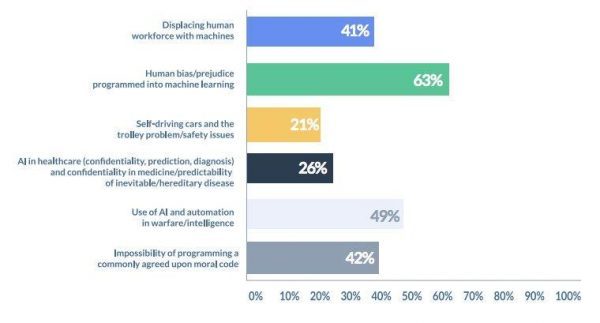Threadripper Competition Emerges As Intel Lets Core i9-7920X Details Slip

The Intel versus AMD battle is becoming more pitched. AMD is placing pressure on Intel with its new high-end desktop Threadripper models while also squeezing the low end of the market with the forthcoming Ryzen 3 models. Intel has its Core i9-7920X, the 12-core model in the Skylake-X lineup, waiting in the wings to challenge AMD’s Threadripper, but the company has released little information on the new processor. The Core -7920X’s sudden appearance on the company’s July price list, though, suggests it will appear on schedule in August.
We knew the Core i9-7920X would come bearing 12 cores and 24 threads, which will contend with AMD’s 12-core Ryzen Threadripper 1920X, but the base processor frequency and cache allotment are new information. The Core i9-7920X features a 2.9GHz base frequency, which is a substantial decline from its ten-core Core i9-7900X counterpart’s 3.3GHz. We anticipated the -7920X’s moderate base frequency reduction compared to the smaller Core i9 models (that’s a trend with higher core count processors), but the disparity is much wider than expected. It’s going to be interesting to see how much further the 18C/36T flagship Core i9-7980XE falls.
Threadripper comes in two models, and the low-end 1920X features a 3.5GHz base and 4.0GHz boost, which beats the comparable Intel processor handily. That helps offset some of Intel’s IPC advantage. However, Intel’s boost frequencies were one of the most surprising aspects of the Core i9 lineup. Intel’s high core count models all boost to 4.5GHz, and although we can’t be sure of the unannounced turbos of the -7960X and -7920X, Intel might hold the advantage. Intel’s Turbo Boost implementation provides varying boost levels based upon the number of active cores. For instance, the Core i9-7900X’s Turbo Boost 2.0 provides up to 4.3 GHz with two active cores, 4.1 GHz for up to four active cores, and 4.0 GHz for all ten cores. You also get an extra dual-core 4.5 GHz Turbo Boost 3.0 for two cores. Both Threadripper models boost up to 4.0 GHz, but AMD hasn’t revealed XFR turbo frequencies.
The Threadripper 1920X also retails for only $799, which is quite the savings compared to the Intel twelve core model, which weighs in at $1,189. It’s notable that the Intel price list represents a whopping $10 price reduction compared to Intel’s previously-announced -7920X pricing.
| Core i5-7640X | Core i7-7740X | Core i7-7800X | Core i7-7820X | Core i9-7900X | Core i9-7920X | Core i9-7940X | Core i9-7960X | Core i9-7980XE | |
|---|---|---|---|---|---|---|---|---|---|
| Family | Kaby Lake-X | Kaby Lake-X | Skylake-X | Skylake-X | Skylake-X | Skylake-X | Skylake-X | Skylake-X | Skylake-X |
| Process | 14nm+ | 14nm+ | 14nm | 14nm | 14nm | 14nm | |||
| Cores/Threads | 4/4 | 4/8 | 6/12 | 8/16 | 10/20 | 12/24 | 14/28 | 16/32 | 18/36 |
| Base Clock (GHz) | 4.0 | 4.3 | 3.5 | 3.6 | 3.3 | 2.9 | ? | ? | ? |
| Intel TurboBoost 2.0 Frequency (GHz) | 4.2 | 4.5 | 4.0 | 4.3 | 4.3 | ? | ? | ? | ? |
| Intel TurboBoost 3.0 Frequency (GHz) | NA | NA | NA | 4.5 | 4.5 | ? | ? | ? | ? |
| L3 Cache | 6 | 8 | 8.25 | 11 | 13.75 | 16.5 | ? | ? | ? |
| PCIe 3.0 Lanes | 16 | 16 | 28 | 28 | 44 | ? | ? | ? | ? |
| Memory Support | Dual Channel DDR4-2666 | Dual Channel DDR4-2666 | Quad Channel DDR4-2400 | Quad Channel DDR4-2666 | Quad Channel DDR4-2666 | ? | ? | ? | ? |
| TDP | 112W | 112W | 140W | 140W | 140W | ? | ? | ? | 165W |
| Socket | 2066 | 2066 | 2066 | 2066 | 2066 | 2066 | 2066 | 2066 | 2066 |
| RCP Pricing (USD 1K Units) | $242 | $339 | $389 | $599 | $999 | $1,189 | $1,399 | $1,699 | $1,999 |
The Core i9-7920X also features 16.5MB of L3 cache, which falls in line with the Core i9’s standard 1.375MB of L3 cache per core. It’s notable, however, that it has much more L2 cache than previous-gen models due to Intel’s reworked cache hierarchy, although we’ll have to wait for the official measurement. The price list also confirms that the -7920X employs the 14nm process, but that isn’t a surprise. The -7920X will also likely come with Intel’s full complement of 44 PCIe lanes compared to Threadripper’s 64 PCIe lanes.
On another note, the new price list also indicates that Intel isn’t reducing prices in the face of the Ryzen onslaught. Unfortunately, the “% Decrease” column is barren. Intel did lower per-core pricing of its new Core i9 models compared to the previous generation, and many predict it will follow the same tactic as it releases newer models. At least it’s something.
The renewed CPU wars may not be lighting a pricing fire, but it’s apparent that Intel is attempting to stave off the Threadripper onslaught. We’ve reached out to Intel for an official release date and will update as more information comes to light.










